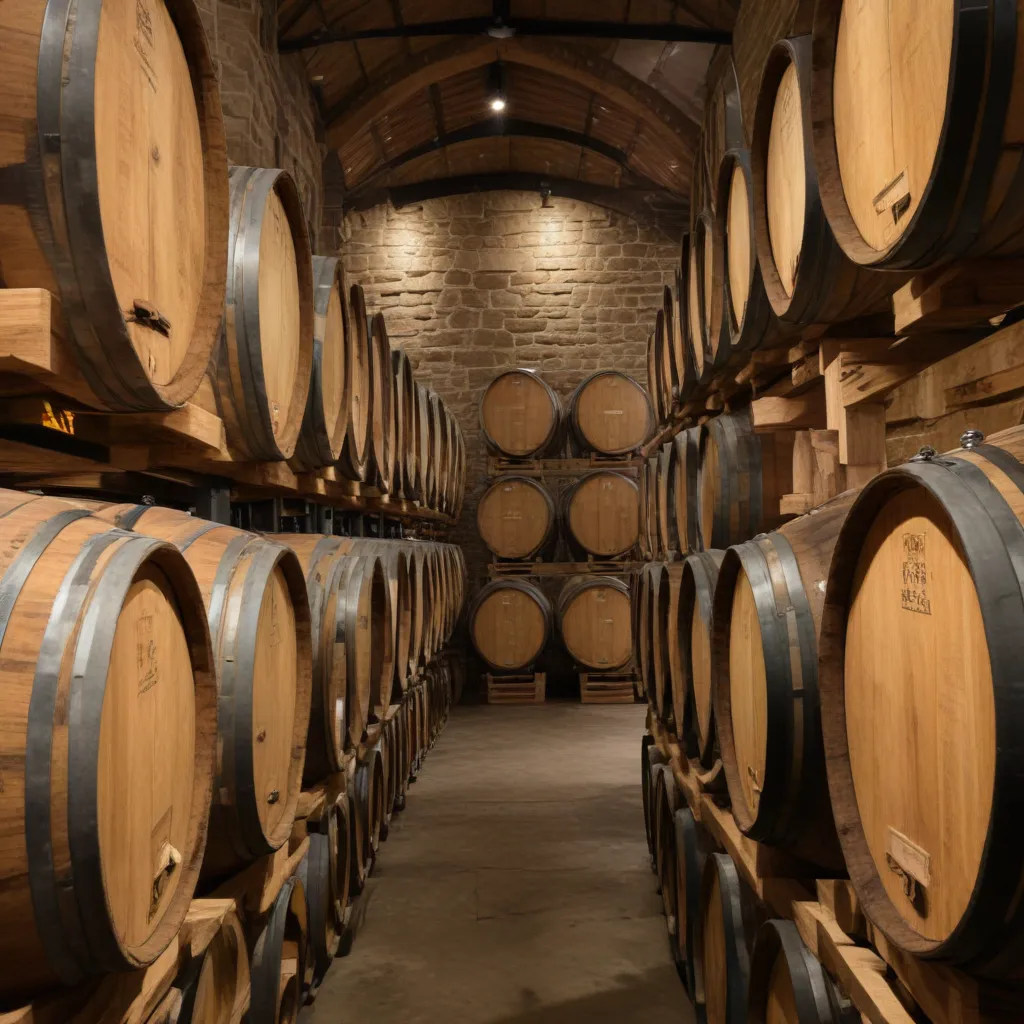
In the rolling hills of our beloved Wine Garden Inn, the art of winemaking is more than just a profession – it’s a steadfast commitment to honoring the land and cultivating exceptional flavors. At the heart of this pursuit lies the practice of barrel fermentation, a time-honored technique that has the power to transform the very essence of our wines.
The History of Barrel Fermentation
The use of oak barrels in winemaking has deep roots, tracing back to the ancient civilizations of Europe. These vessels, crafted with meticulous care by skilled coopers, not only served as storage containers but also became integral to the maturation and evolution of wines. As the centuries passed, winemakers recognized the profound impact that barrel aging could have on the character and complexity of their creations.
The Science Behind Barrel Fermentation
The interplay between the wine and the oak barrel is a delicate dance, where a symphony of chemical reactions unfolds. The porous nature of the barrel allows for a gentle exchange of oxygen, which promotes the polymerization of tannins and color compounds. This gradual oxidation helps to soften the wine’s structure, enhancing its texture and mouthfeel.
Moreover, the interaction between the wine and the wood imparts a myriad of subtle flavors and aromas. The toasting process of the barrels introduces compounds such as vanillin, which lend a captivating vanilla note, and lactones, which contribute a distinct coconut-like character. These aromatic compounds become seamlessly integrated into the wine, creating a harmonious and multidimensional flavor profile.
The Impact on Wine Flavor
The influence of barrel fermentation on the final flavor of the wine is nothing short of transformative. Wines that have undergone this process often exhibit a heightened sense of complexity, with layers of flavor that unfold with each sip. The integration of oak-derived notes with the wine’s inherent characteristics results in a balanced and sophisticated expression, elevating the overall drinking experience.
Furthermore, the gentle microoxygenation provided by the barrel enhances the wine’s mouthfeel, adding a silky, velvety texture that caresses the palate. This textural enhancement, combined with the nuanced aromas, creates a truly captivating and memorable tasting experience.
Selecting the Right Barrels
Crafting the perfect barrel-fermented wine is an art that requires meticulous attention to detail. Winemakers must carefully select the oak type, toasting level, and barrel size to achieve their desired flavor profile. For example, French oak barrels impart a more subtle and elegant influence, while American oak barrels lend a more pronounced, vanilla-like character.
The size of the barrel also plays a crucial role, as smaller barrels (such as barriques) provide a greater surface area-to-volume ratio, resulting in a more intense oak integration. Larger barrels, on the other hand, offer a more gradual and harmonious integration, allowing the wine’s natural characteristics to shine.
The Barrel Fermentation Process
The process of barrel fermentation is a meticulous and time-consuming endeavor, requiring constant monitoring and adjustments. The wine is carefully inoculated with selected yeast strains, and the fermentation takes place within the confines of the oak barrels. Throughout this journey, winemakers must vigilantly maintain the ideal temperature and humidity levels to ensure the successful completion of the fermentation.
As the wine matures in the barrel, winemakers may also perform regular topping up and racking to maintain the desired oxygen exposure and prevent the formation of unwanted compounds. This hands-on approach is a testament to the dedication and expertise of the winemaking team, as they strive to coax the very best from each vintage.
Sensory Characteristics of Barrel-Fermented Wines
The sensory experience of a barrel-fermented wine is truly remarkable. The increased complexity manifests in a harmonious blend of flavors, from ripe fruit to subtle spice and warm vanilla. The enhanced mouthfeel provides a silky, velvety texture that caresses the palate, leaving a lasting impression.
Moreover, the nuanced aromas that emerge from the barrel-aging process captivate the senses, transporting the taster to the heart of the vineyard. These aromatic profiles can range from delicate floral notes to robust, toasted oak undertones, each complementing the wine’s inherent characteristics.
Grape Varieties and Barrel Fermentation
The magic of barrel fermentation is not limited to a single grape variety; it can be applied to both white and red wines, as well as hybrid grape varieties. Each genre lends itself to unique interpretations, with the barrel’s influence accentuating the natural strengths of the grape.
For white wines, barrel fermentation can enhance the wine’s mouthfeel and introduce subtle oak-derived flavors that beautifully complement the wine’s inherent acidity and minerality. Red wines, on the other hand, benefit from the barrel’s ability to soften the tannins and integrate the oak-derived aromas with the wine’s bold fruit profiles.
Sustainability and Barrel Fermentation
As the wine industry strives to adopt more sustainable practices, the role of barrel fermentation in this journey is not to be overlooked. Winemakers are increasingly finding innovative ways to reuse and recycle their barrels, whether by repurposing them as decorative elements or by utilizing them for the aging of spirits and other beverages.
Moreover, some wineries are exploring alternative barrel materials, such as concrete or stainless steel, to achieve similar results while reducing their environmental footprint. This commitment to sustainability ensures that the legacy of barrel fermentation continues to thrive, while also safeguarding the natural resources that are so vital to the winemaking process.
At the Wine Garden Inn, we take great pride in our barrel-fermented wines, each one a testament to the skill and dedication of our winemaking team. As you savor the complexity, mouthfeel, and nuanced aromas of our barrel-fermented offerings, we invite you to embark on a captivating journey through the heart of our vineyards, where the art of winemaking is elevated to new heights.
